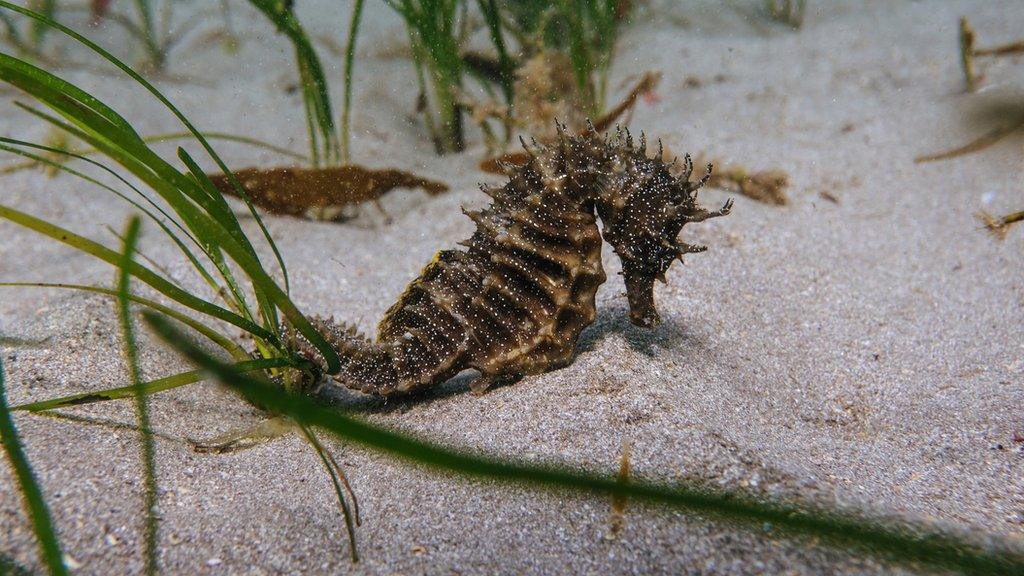The family duo studying the winter secrets of Weymouth's seahorses
- Published
Chloe Brown, 14, can identify the different individual seahorses based on their markings
Fourteen-year-old Chloe Brown and her dad Chris have an unusual pastime together - they record the secret lives of seahorses off the Dorset Coast.
The duo, who are volunteer divers for the Seahorse Trust, are hoping to track the fish off Weymouth Bay through the winter to record their behaviour.
Mr Brown said: "This is the first year that I intend to dive throughout the year to confirm whether the seahorses stay in the same territory year round."
After passing her Professional Association of Diving Instructors (PADI) open water diver qualification, Chloe decided to team up with her dad - who is on the Weymouth-based charity's licence to survey.
She said: "It is going to involve some very cold diving but we want to know, will these seahorses that we have tracked for four months stay shallow in the winter, or will they go deeper."
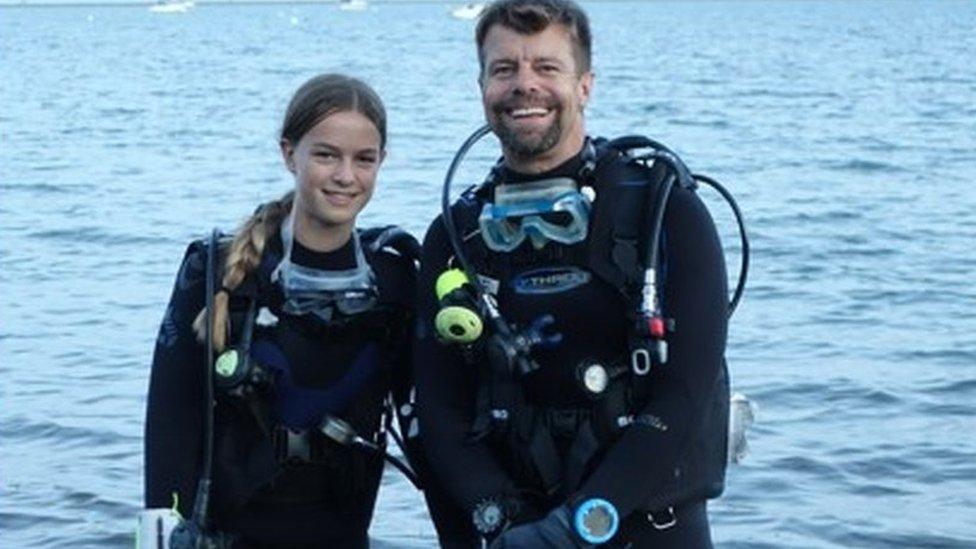
Chloe and Chris Brown hope their surveys will shed some light on the winter habits of the seahorses off Weymouth Bay
Mr Brown, who has looked after and bred seahorses at aquariums for more than 20 years, said: "There is so much still unknown about their secret lives.
"It is really important that we learn more about their population dynamics and how they use these incredible seagrass habitats."
Armed with a slate and pencil, torch, compass to navigate, measuring wheel and camera the pair carry out their surveys by swimming slowly, parallel to each other over the seagrass hoping to spot some fluttering fins or a tail wrapped around some seagrass.
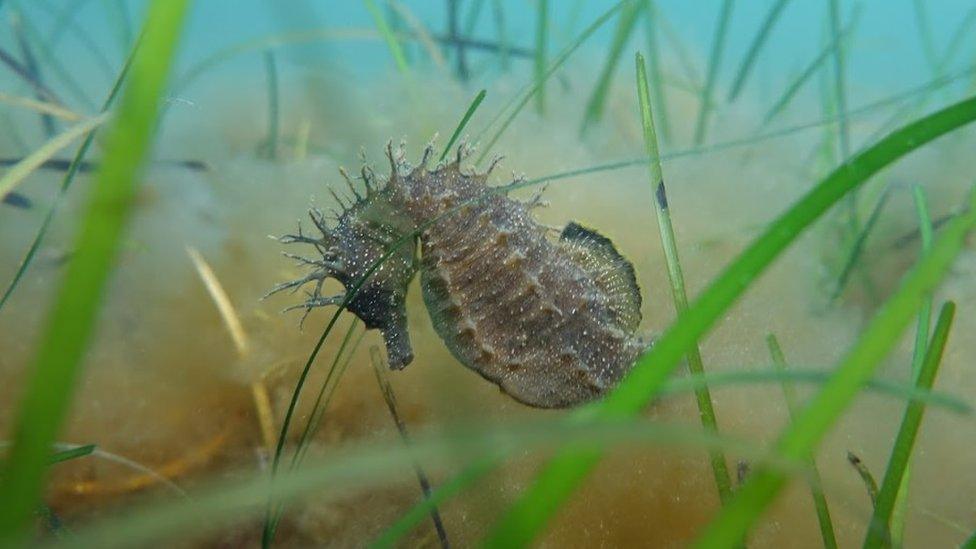
The first seahorse Chloe spotted was a male she has named Snailhead
It's a delicate procedure, lasting up to 90 minutes involving hovering in the water or resting on the seafloor often "with just fingers and knees or tips of fins supporting us", Chloe said.
"They are very hard to spot and usually blend into their surroundings.
"Sometimes you can clearly see their silhouette, but sometimes if they are hiding with their head down, you just won't find them," she added.
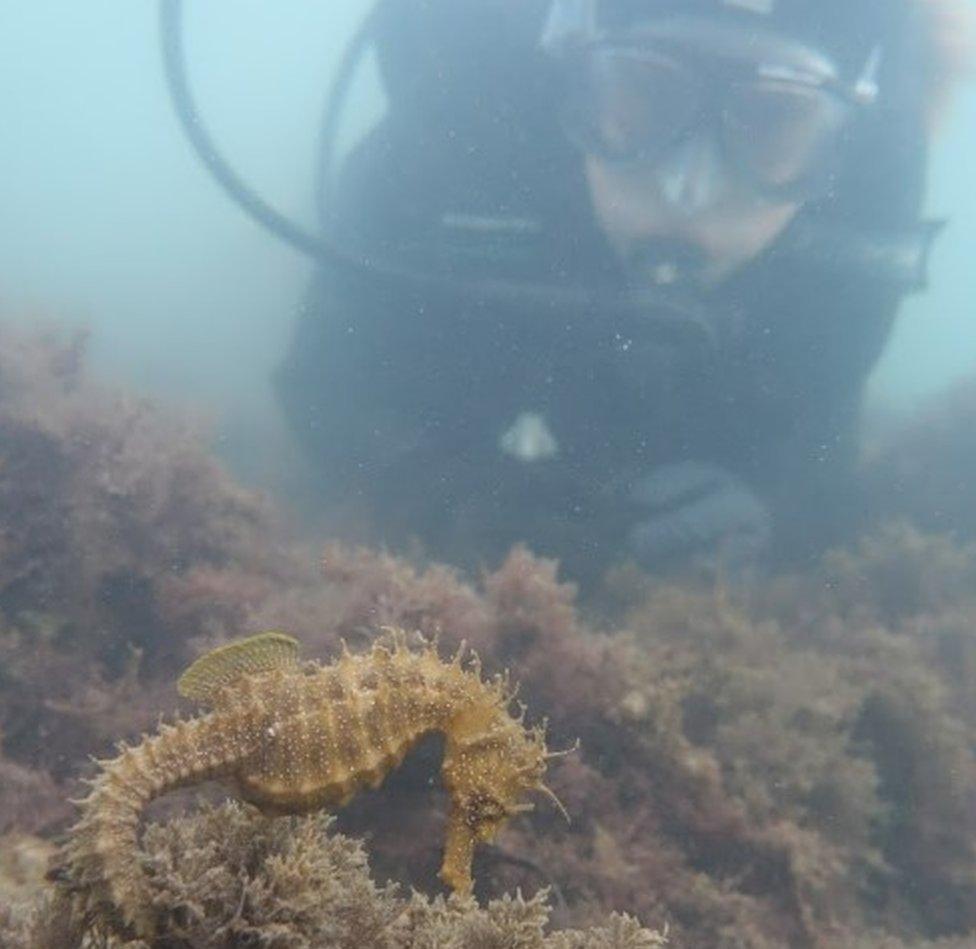
During a dive they record what sex the seahorses are and take at least two photos of either side of their profile to help identify them
Chloe said: "I can identify the different individual seahorses based on their markings... they all have unique spots on their face and body.
"When we find a seahorse I stay back and watch it while my dad photographs both sides of it for identification.
"As he moves away, I go closer and take some pictures and see if I can identify them while underwater."
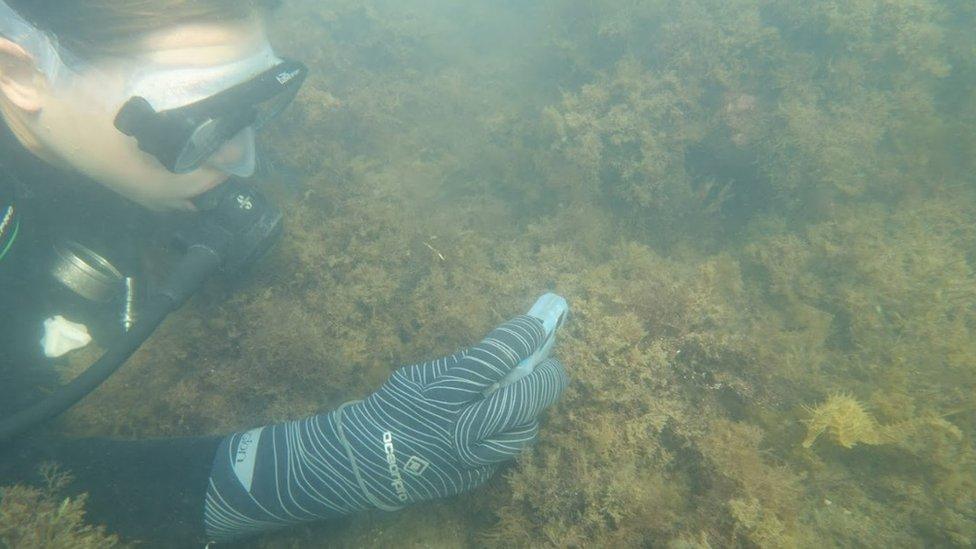
Chloe photographing a female seahorse named 'Snailless', the pair see regularly during their dives
They often see one of two seahorses during a dive who they hope will help with the winter project.
"A male we have named 'Snailhead' - because he had a snail on the top of his crown the first time we saw him and a female who we think is his partner - 'Snailless'!
"Their territories seem to overlap but we have never seen them both on the same dive. Hopefully the surveys will tell us more about how big their territories are," Chloe said.
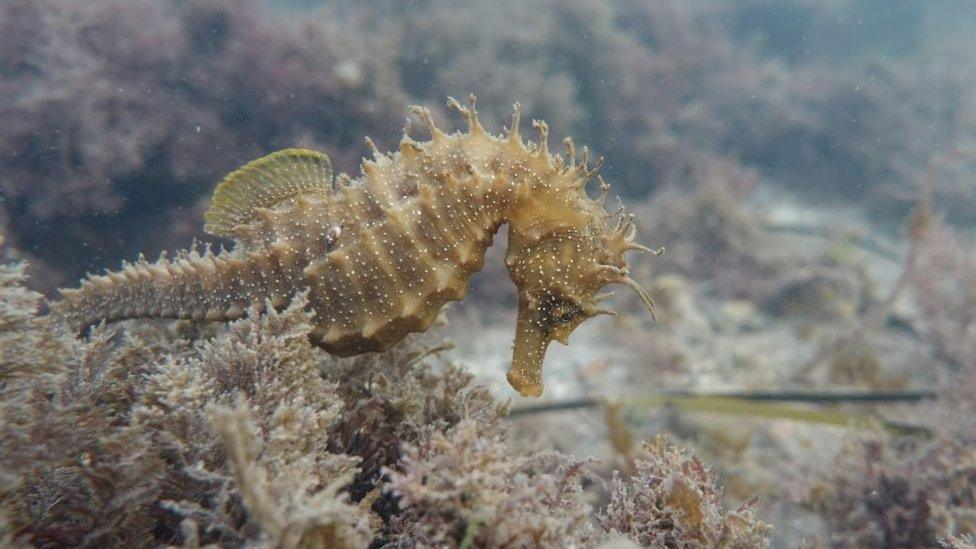
Seahorses all have unique spots on their face and body which the Brown's use to identify them during their surveys
Once back on dry land their pair write a detailed report from every dive and send it to the Seahorse Trust. The reports are collated by the trust each year and submitted to The Marine Management Organisation (MMO).
The pair, who started weekly dives in September, expect to reveal the findings from their winter dives in the spring.

Chloe has captures some stunning shots of the seahorses in the bay during her dives
Seahorses
There are two species around the British Coastline, the Spiny Seahorse and the Short Snouted Seahorse
Seahorses are fish. They live in water, breath through gills and have a swim bladder
Seahorses eat small crustacea such as Mysis Shrimp. An adult eats 30-50 times a day
Seahorses have excellent eyesight and their eyes are able to work independently on either side of their head
Females have a territory of about 100 sq. metres and males have a territory of about 0.5 sq. metres. Their territories overlap
It illegal to kill, take or disturb seahorses in British waters
The habitat where seahorses are found is also protected which means that if you find a seahorse in a seagrass bed, that seagrass bed is protected
Source: The Seahorse Trust, external

Follow BBC South on Facebook, external, Twitter, external, or Instagram, external. Send your story ideas to south.newsonline@bbc.co.uk, external
- Published7 January 2022
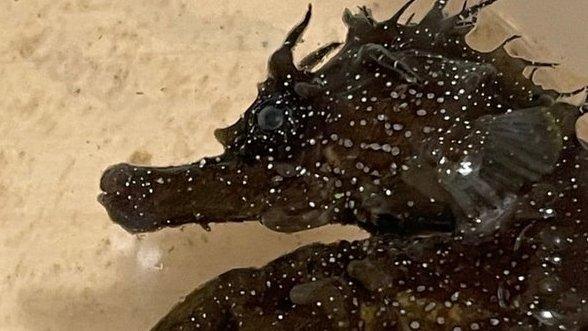
- Published8 June 2022
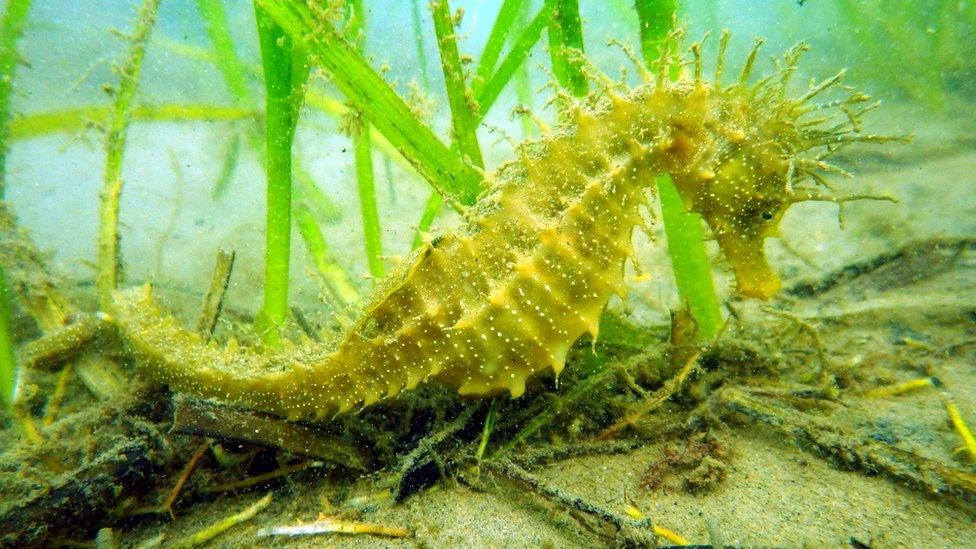
- Published3 May 2022
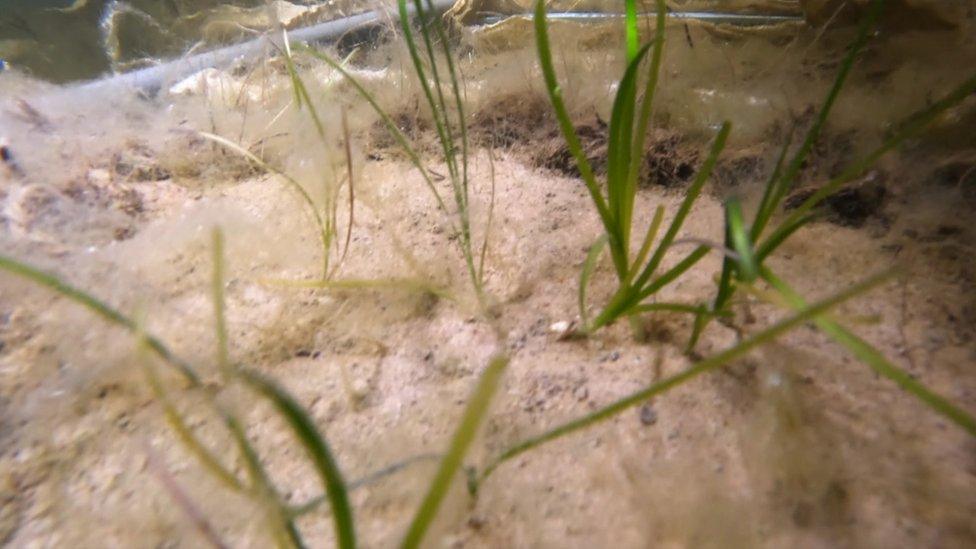
- Published28 July 2021

- Published14 June 2021
